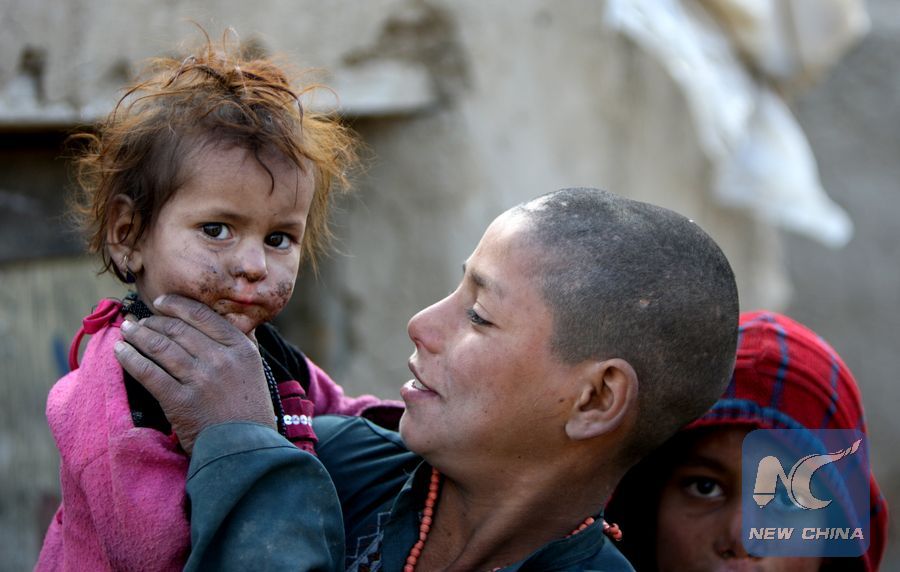
File Photo: An Afghan boy holds his sister at a slum area in Kabul, Afghanistan, Dec. 2, 2014. (Xinhua/Ahmad Massoud)
UNITED NATIONS, July 11 (Xinhua) -- A United Nations index report published Thursday showed that 1.3 billion people across the world are "multidimensionally poor."
The 2019 global Multidimensional Poverty Index (MPI) from the UN Development Programme showed that, in the 101 countries studied -- 31 low income, 68 middle income and two high income -- 1.3 billion people are "multidimensionally poor," which means that poverty is defined not simply by income, but by a number of indicators, including poor health, poor quality of work and the threat of violence.
There are vast inequalities across countries, and among the poorer segments of societies, the report said.
"Action against poverty is needed in all developing regions," the report said, noting that sub-Saharan Africa and South Asia are home to the largest proportion of poor people, some 84.5 percent.
Within these regions, the level of inequality is described as "massive." In sub-Saharan Africa, it ranges from 6.3 percent in South Africa to 91.9 percent in South Sudan. The disparity in South Asia is from 0.8 percent in the Maldives to 55.9 percent in Afghanistan.
Many of the countries studied in the report show "extensive" internal levels of inequality. In Uganda, for example, the incidence of multidimensional poverty in the different provinces ranges from 6 percent in Kampala to 96.3 percent in Karamoja.
More than half of the 1.3 billion people identified as poor, some 663 million, are children under the age of 18, and around a third, some 428 million, are under the age of 10.
The vast majority of these children, around 85 percent, live in South Asia and sub-Saharan Africa, split roughly equally between the two regions. The picture is particularly dire in Burkina Faso, Chad, Ethiopia, Niger and South Sudan, where 90 percent or more of children under the age of 10 are considered to be "multidimensionally poor."
One section of the report evaluated the progress being made in reaching Goal 1 of the UN's 2030 Agenda for Sustainable Development, namely ending poverty "in all its forms, everywhere."
The report identified 10 countries, with a combined population of around 2 billion people, to illustrate the level of poverty reduction, and all of them have shown statistically significant progress toward achieving Goal 1. The fastest reductions were seen in India, Cambodia and Bangladesh.
However, the report noted that no single measure is a sufficient guide to both inequality and multidimensional poverty, and that studies such as the MPI, Human Development Index, and Gini coefficient, which measures countries' wealth income distribution, can each contribute important and distinctive information for policy action to effectively reduce poverty.

